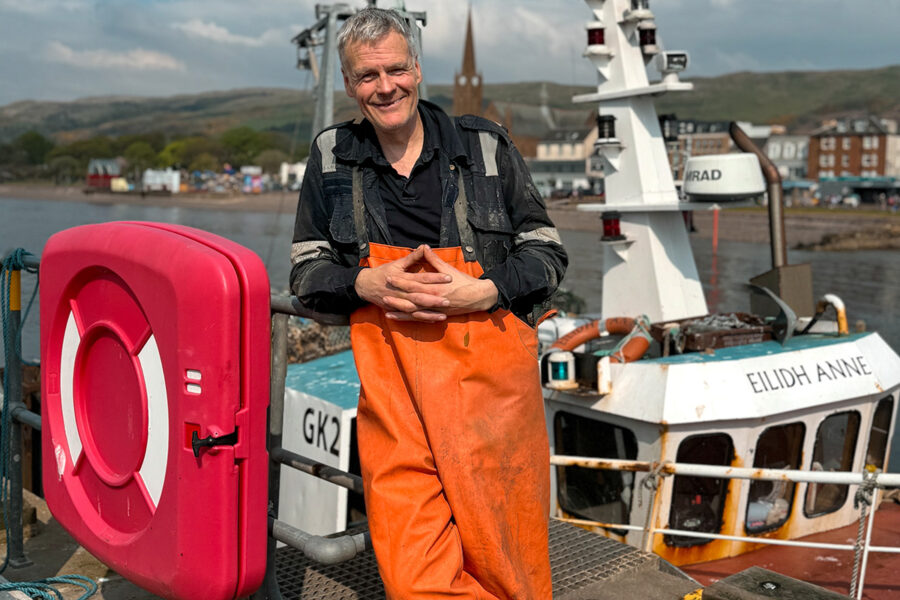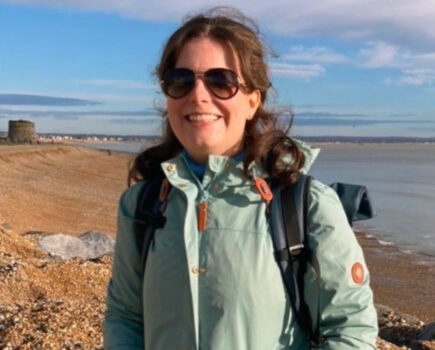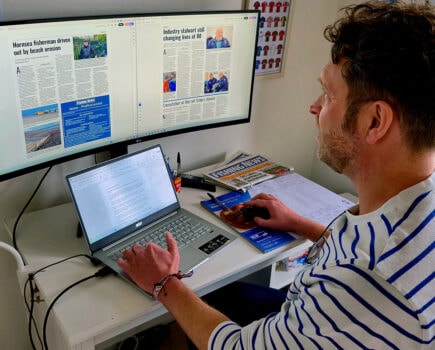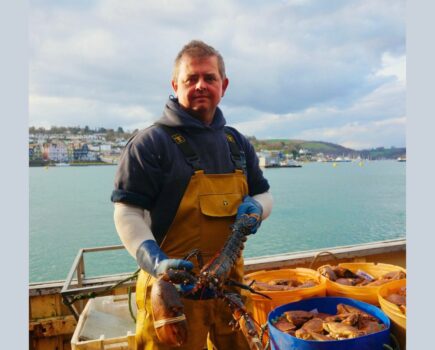“You lean on the rail drinking a cup of coffee, watching the dolphins playing, and you think: ‘This is the stuff of dreams – most of the world will never get to see this,’” Clyde fisherman Ian Wightman told Fishing News.
From starting out in his teens as a ‘pier pest’ – being paid in fish for helping to tie up vessels, and then selling his ‘catch’ to neighbours – to owning his own boat at just 20 years of age, Ian has seen much over the course of a career spanning more than four decades.
As well as targeting Nephrops from his vessel Eilidh Anne GK 2, he also works on a range of industry projects, from innovative gear trials to the promotion of Scottish langoustine – efforts which this year saw him named Under-10m Fisherman of the Year at the Fishing News Awards. However, despite a growing commitment to shoreside responsibilities, Ian’s first focus of the day remains the fishing.
“We like to get the gear in the water just before daylight is breaking. Right now, there’s not much daylight – so the alarm is currently set for 5.45am.
“I’ll get my stuff together and jump into the van and head down to the marina. If the nightwatchman of the marina is about, I’ll have a wee chat with him. Then I’ll head down to the pontoon, carry out my engine checks, and let go – and head out to wherever we’ve decided.
“Being of a more mature vintage now, we don’t do a lot of steaming about. We mostly stay close to home – the maximum we steam is for about an hour. Sometimes we’re forced to work places where you might not want to work, but it’s the place where you’ll get a lee.
“We can be weather- dependent, but we’re usually pretty lucky in that we can find a corner to work in. It might not be the most profitable place to work, but you’ll always get a day in, as opposed to some of the more exposed harbours.”
With the gear in the water, Ian can catch up on some administrative tasks. “Even though I’m under-10m, I’m still part of the Scottish Fishermen’s Organisation. As a member, I do the logbook for the Marine Directorate. So I’ll get the paperwork started for that. I’ll also catch up with any emails.
“Unfortunately, administration is now a necessary evil. When I started out, you went and did your thing and then came back – and paperwork was minimal. Nowadays, it’s a major part of the job.”
With the paperwork complete, Ian can focus on the fishing. “As our prawns are for the live market, we tend to keep our hauls shorter to keep them in good order – an hour and a half to two hours is the maximum.
“As soon as we’re lifted, the strings are tied and the net is back over the side, we’ll start sorting. We’re working for quality over quantity, so it doesn’t usually take too long to get the deck cleared. Depending on how long the day is, we’re looking to do three hauls, maybe four.”
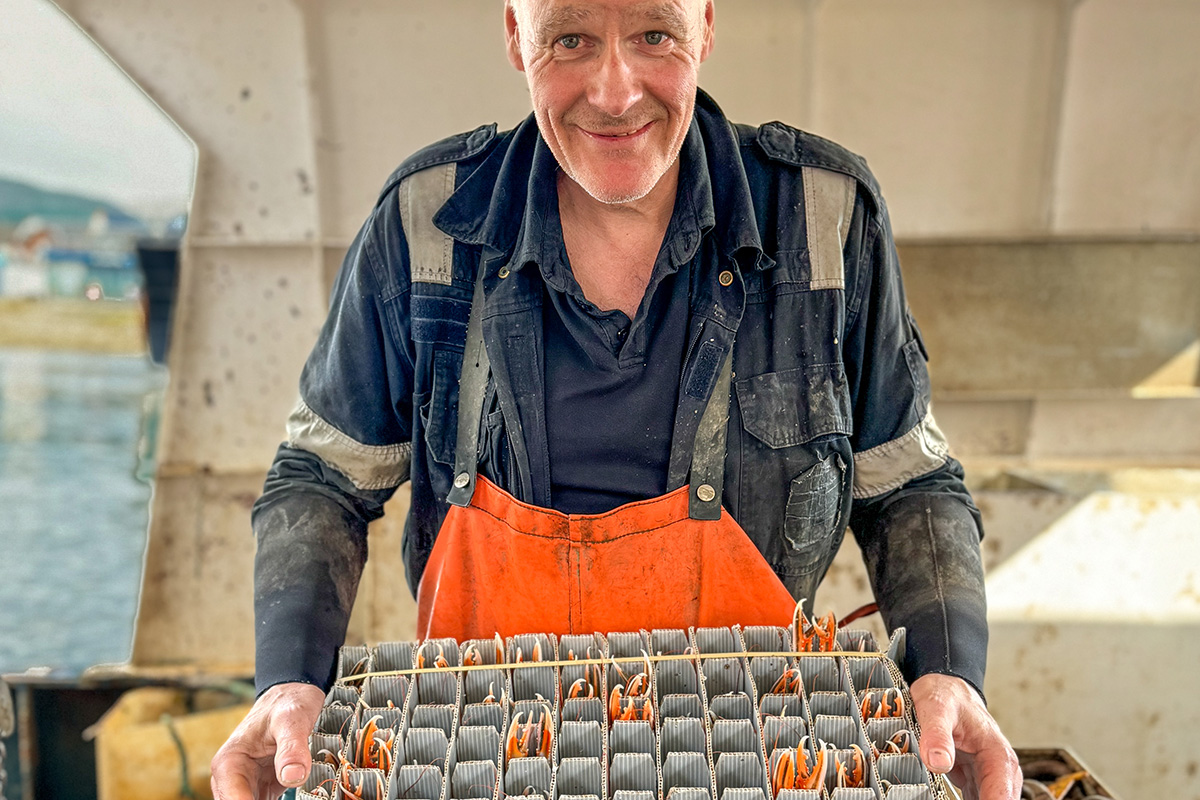
“I’m always looking for better-quality prawns – it’s quality over quantity. You can end up working a wee bit closer to the ground looking for a better prawn. The downside of that is there’s a higher chance of a bit of damage. It’s a payoff game – do you go for the easier life and the smaller prawns, or do you take a bit of a chance and go for a better one?” (Photo: Lucinda Kennedy/Seafood Scotland)
With the fishing completed, Ian prepares to land at the pier in Largs. “In the old days, you had to be landed at the pier by 5pm for the prawns to be taken to the old shout market in Ayr.
“We’ve never quite got out of that routine, so we’ll be in to land for 5pm to 5.30pm for the prawns to be picked up and taken to Troon – where they’re kept in tanks on the quay for about 12 hours to determine the best prawns for the ongoing journey to wherever they’re going.”
Ian then takes the Eilidh Anne back into the marina, where he’ll carry out any necessary maintenance tasks before finally heading home for around 8pm.
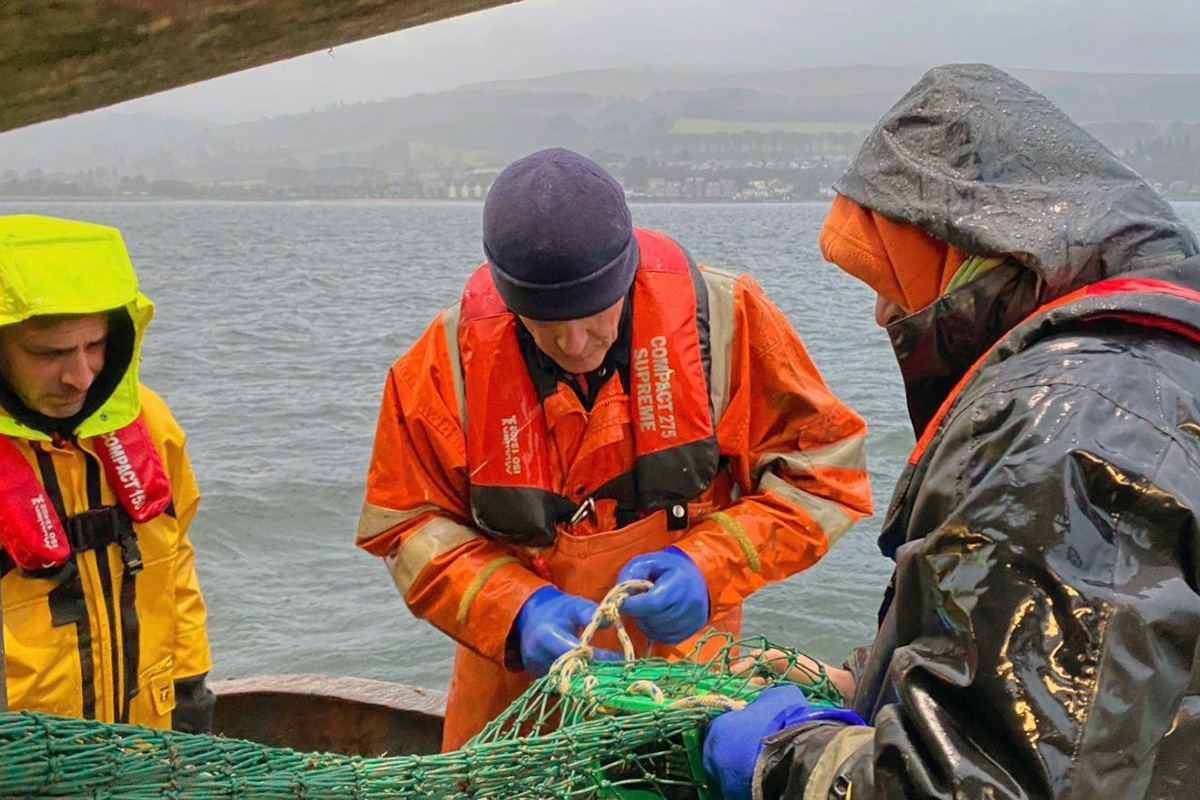
Ian, who is now coming towards the end of his long career, is keen to give something back to the industry. “I’ve been working with CatchCam. They’ve left me a camera to play with. If the gear goes off a wee bit, I’ll pop the camera on the net – two hours later, and there’s a good chance you’ve got the answer as to why the gear isn’t working. The last three or four years is the only time I’ve seen what our gear does in the water. I’ve completely changed the way I rig my gear, having seen the net in action.” (Photo: CatchCam Technologies)
When not at sea, his focus turns to shore-based responsibilities. “Recently, Seafood Scotland asked me to go through and help with an event in the Scottish parliament for their 25th anniversary.
“I’ve also been asked onto the board of trustees for Fishing into the Future. We’re organising a Fisheries Research Education Programme (F-REP) meeting for the Clyde and west coast.” The event, taking place early next year at Ingliston Estate near Glasgow, will primarily focus on langoustine, prawns and other shellfish species.
Another project Ian is involved with is working with CatchCam Technologies to trial sensors measuring gear interaction with the seabed, with the aim of disproving some of the claims about the extent of seabed damage. This trial is another part of Ian’s aim to ‘give something back’.
“The industry has been good to me, so I don’t mind doing these things. I’ve been fishing long enough now that I can see the end is coming – I don’t know when it will come, but I’m trying to pay a wee bit back.
“As the saying goes – you’re a long time looking at the lid of the box.”
This story was taken from the latest issue of Fishing News. For more up-to-date and in-depth reports on the UK and Irish commercial fishing sector, subscribe to Fishing News here or buy the latest single issue for just £3.50 here.
Sign up to Fishing News’ FREE e-newsletter here.

